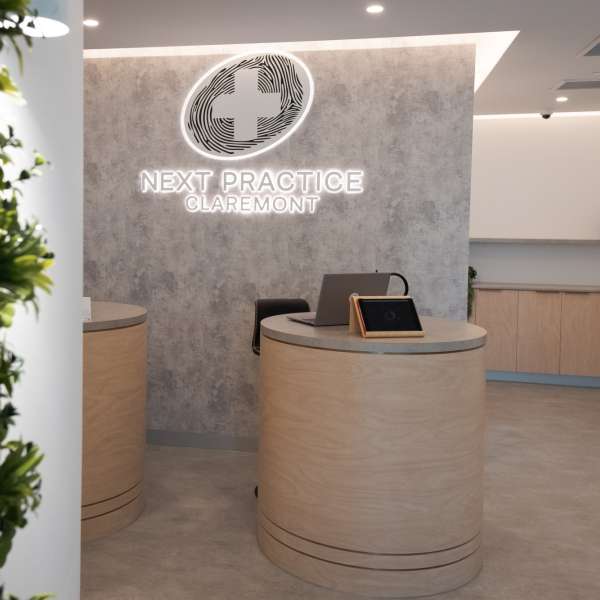
A Guide to Women’s Health Over Time
Women’s health includes a lot more than just reproductive care – it's a holistic approach that includes both physical and mental support that evolves through every stage of life. Whether in the early teens or navigating post-menopause, women’s health priorities look different at every age.
Understanding key health milestones as you age is important to tackling any potential health challenges that may arise or preventing certain conditions in the future. Each milestone has a trickled-down effect and impacts your health as you age.
A breakdown of women’s health conditions over time
In Your Teens
Puberty & Menstrual Health
Within this stage of life, hormones trigger ovulation and subsequent menstruation, which is the natural shedding of the uterine lining if pregnancy does not occur. This change in the body can lead to a range of symptoms and health changes such as breast development, hair growth, and potentially menstrual cramping/pain, heavy bleeding, and mood swings.
Mental Health
The teenage years are a period of emotional development, stress, and identity formation. Mental health conditions such as depression, anxiety, and low self-esteem can become present at this time.
Skin
As teens enter puberty, hormonal changes can impact the skin and result in conditions such as acne. The hormonal shift increases oil production which can in turn block pores and cause blemishes.
In your 20s and 30s
Fertility and Contraception
Fertility is at its peak in the 20s and early 30s, and many women begin exploring birth control methods or family planning. Understanding how ovulation works, knowing your options for contraception, and having regular checkups with a gynaecologist or GP is essential for reproductive autonomy.
Prenatal and post-natal care
When choosing to start a family, pre-natal health, pregnancy, childbirth and post-natal care are core milestones that require very different focuses, health management, and care. Proper prenatal care ensures a healthy pregnancy, while postnatal care focuses on recovery, breastfeeding, and managing emotional health (including postpartum depression).
Menstrual Health and Hormonal Disorders
Conditions like polycystic ovary syndrome (PCOS), premenstrual dysphoric disorder (PMDD), and endometriosis often become more apparent in these years. These disorders can affect fertility, energy levels, and mental health, and should be properly diagnosed and managed to prevent complication in the future. Potential risks can include infertility, early onset menopause, and depression/anxiety.
Bone Density
As a preventative measure to ensure long-term health and wellbeing, bone density and muscle retention should be a key focus in the 20s and 30s. By focusing on strength training, consistent activity and movement, the risk of conditions such as osteoporosis, sarcopenia (age-related muscle loss), and joint instability later in life are significantly reduced.
STI prevention and screenings
Sexual Activity often increases in this stage of life and as such, routine sexual health check-ups such as cervical screenings and STI checks are vital for prevention of sexually transmitted diseases and early detection of cervical cancer and infections.
In Your 40s and 50s
Perimenopause and menopause
Perimenopause is the period of transition to menopause, in which hormone levels start to change and fluctuations within the body start to occur. Menopause marks the end of menstrual cycles and fertility, usually between ages 45 and 55. It is officially diagnosed after 12 months without a period and often triggered by hormonal fluctuations, which may cause symptoms like hot flashes, mood swings, sleep disturbances, and joint/muscle aches.
Increased risk for breast cancer and cardiovascular issues
Risk for breast cancer and heart diseases increases with age. Oestrogen declines at this age and can cause an increase in risk of heart disease, making this a critical time to monitor blood pressure, cholesterol, and lifestyle factors. Consistent screening and lifestyle modifications are important to prevent and detect conditions as early as possible.
In Your 60s and beyond
Osteoporosis and fall prevention
Bone density will decrease naturally with age, which increases the risk of having osteoporosis and bone fractures. This may result in severe falls, long-term disability, and loss of mobility if not detected early. Early detection through bone density scans and routine check-ups with your GP is critical for prevention before it gets worse.
Cognitive health
As a woman gets older, changes in cognition may become more noticeable, and the risk of mild cognitive impairment or dementia may become prominent. Staying physically and mentally active and consistently attending annual health checks helps maintain brain function and slowing deterioration.
Chronic disease management
Arthritis, diabetes, and hypertension can lead to complications like joint damage, kidney issues, and heart disease if left unmanaged. Regular monitoring, check-ups with your GP and lifestyle modifications are advised to prevent these outcomes.
Preventative Screenings That Matter
Prevention is the key to long and healthy life. Regular health checks can help detect conditions early and allow for a higher success rate of treatments. Some of the preventive screenings that are important for every woman are as follows:
Cervical Screening Test (25-74 years old)
- Cervical cancer is one of the most preventable cancers if caught early. Cervical Screening Test is recommended for women aged 25 to 74 years old and have had sexual contact with another person. This test not only checks for abnormal cervical cells but also detects the presence of human papillomavirus (HPV), the virus responsible for most cervical cancers.
- According to the Cancer Council Australia, since the introduction of this screening, the rates of cervical cancer incidence and mortality rates are expected to reduce in at least 20%.
- Frequency: every five years after your first HPV cervical screening test.
Mammogram (40-74 years old)
- The Breast Cancer Network Australia recommends this screening for women aged 40 and above. This procedure scans breast tissue for any early signs of breast cancer, including potential lumps or tiny calcifications that are not visible by physical examination.
- According to the National Breast Cancer Foundation, 1 in 7 Australian women will develop breast cancer in their lifetime, so early detection is important.
- Frequency: Every 2 years. Women with symptoms like new lumps, changes in the nipple, or breast pain, should see their GP for further evaluation.
Bone Density Scan (DEXA) (50 and above; or younger for those with risk factors)
- Healthy Bones Australia recommends women over 50 or younger with risk factors for osteoporosis have a bone check-up through a DEXA scan more frequently than others. To determine if you’re at risk, book an appointment with your local GP.
- Frequency: every 1-2 years.
At Next Practice Claremont, we believe that no woman should go through these phases alone – whether they are managing their first period, planning a family, experiencing menopause, or staying healthy in their later years.
Our goal is to give support and provide care that is holistic and compassionate. Together with Dr Anetta Rybak and Dr Caroline Chin, along with our dedicated team of GPs, we are here to provide the expert care that you need in every stage of your life as a woman.
If you are ready to take the next step in your health journey, you may speak with our team to book a consultation with one of our GPs today.
